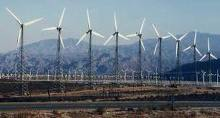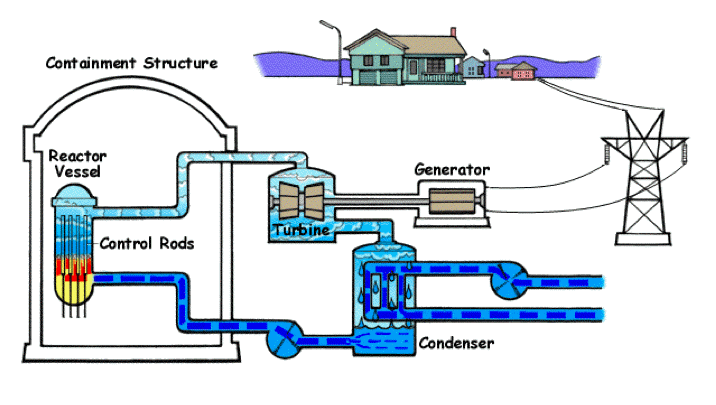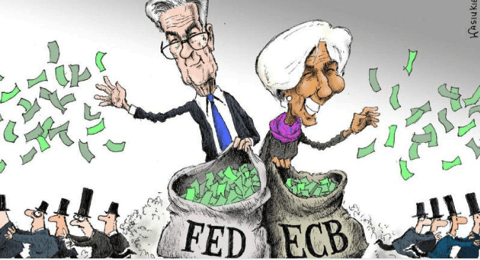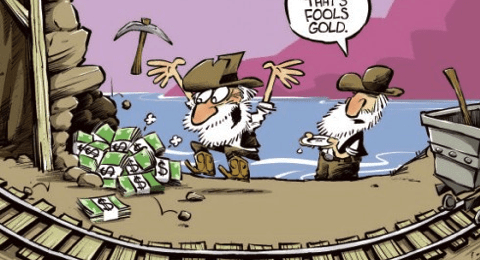
Uranium Shares
July 2, 2024: BUY NOW! Europe, France, Japan, and the USA are resuming nuclear power programs: Soon, the World will be FORCED into Nuclear Energy!
---
| This is a huge, low-risk step-in opportunity. Now is the time to buy. Click on the company name for the home pages. Green colored charts = Bull trends, Red = bear trends, White = sideward & we don't know yet! - Yields updated Aug 2023 | ||||
 |
 |
 |
 |
 |
| (DML.TO) Denison Mines | (LAM.TO) - Laramide | Cameco (CCJ)** 0.24% yield | BWXT (BWXT)** - 1.26% yield | Rio Tinto (RIO)**** - 6.57% yield |
 |
 |
 |
 |
 |
| Manufacturer of Small Nuclear Power Stations and components | ||||
 |
 |
 |
 |
 |
| Westwater Resources (WWR) | NeX gEn Energy (NXE) | UROY (Uranium Royalty) | Fission Uranium Corp. (FCU.TO) | Mega Uranium Ltd (MGA.TO) |
 |
 |
 |
 |
 |
| Harmony (HMY) yield - 0.25% |
12-month performance | |||
 |
 |
 |
 |
|
|
The uranium market is in a unique position such that the world’s largest metal miner would buy on the spot market instead of the mine itself. That says much about the marginal cost of production relative to current prices.
The uranium prices have fallen to a level that is more than surrealistic. Uranium and shares have become a once-in-a-lifetime opportunity and will go ballistic once the actual reserves are depleted. This should typically happen before the end of 2017. When it explodes, this market will be like the Gold and silver mines sector on Steroids. URA went up by 45% over the past six months! (April 2017). Today (2023), the sector has still not adjusted to the REALITY! Cameco is cutting Uranium production (Nov 2017) - The bulk of the American Uranium reserves were sold out to Russia by the Clintons!!! (WWR) Westwater Resources is the new name for Uranium Resources (URRE) - this company Clinton used to sell out American Uranium to Putin Co. destroyed by Clinton and Obama...BAD!!! Replace by any other Uranium Co. The share has been deleted from our selection! Molten Salt reactors never got the go-ahead in the early days of nuclear development because of the difficulty of producing weaponized materials from them. In the current age, that is one of the primary points in their favor since we need a non-proliferation-friendly design less susceptible to meltdowns. Nevertheless, it will be years before we have a working prototype. Small reactors will be the future. |
****

Lockheed announces a breakthrough in nuclear fusion energy. A 100MW reactor is small enough to fit on the back of a truck. A cleaner energy source could be in use within ten years. Lockheed Martin Corp said on Wednesday it had made a technological breakthrough in developing a power source based on nuclear fusion, and the first reactors, small enough to fit on the back of a truck, could be ready for use in a decade. Tom McGuire, who heads the project, said he and a small team had been working on fusion energy at Lockheed’s secretive Skunk Works for about four years, but we're now going public to find potential partners in the industry and government for their work.
 |
 |
| Click to enlarge | |
 |
 |
| Chernobyl-style reactors are no longer on planet Earth. | |
 |
|
 |
 |
 |
 |
 |
 |
 |
| Click to enlarge | |
 |
|
| The current price of yellowcake is $ 35 /lb (Dec 2013) | |
The United States only controls 3% of the global uranium supply—and less than 15% of the enrichment capacity, although it's the largest consumer of uranium in the world.
There is a net shortage of projected global electricity generating capacity. IAEA forecasts (Aug 2012) for growth in nuclear power plants range to 740 GWe in place by 2030, 101% above the 2011 installed global operating capacity of 369 GWe. A reference case forecast (2011 WNFM study) is 614 GWe of nuclear power generating capacity by 2030. The WNA upper case forecast is 790 GWe by 2030.
 |
Strong growth in nuclear reactor construction is expected to continue globally, with 484 planned and proposed nuclear reactors (Nov '12), up 2 from 482 pre-Fukushima (Mar '11). Growth is expected to remain particularly strong in Asia, with Chinese expansion continuing to lead the pack. China's official installed nuclear capacity projections are 70-80 GWe by 2020, 200 GWe by 2030, and 400-500 GWe by 2050. This compares with a 12 GWe capacity today (15 reactors). China has 26 reactors currently under construction.
Support and demand for new nuclear power reactors are expected from China, India, South Korea, the USA, the UK, the Middle East, Russia, and Ukraine. Demand for uranium is expected to increase from around 164 mlpa U3O8 in 2011 to 226 mlpa by 2020 and 280 mlpa by 2030. The current primary supply of uranium (139mlbs U3O8 2011) is only around 50% of the expected uranium demand in 2020.
Windmills or Nuclear power stations?
 Let's take two typical examples: a GE 1.5 MW wind turbine and the Comanche Peak Nuclear Generating station outside of Dallas, Texas. Comanche Peak has two reactors with a combined capacity of 2.5 GW.
Let's take two typical examples: a GE 1.5 MW wind turbine and the Comanche Peak Nuclear Generating station outside of Dallas, Texas. Comanche Peak has two reactors with a combined capacity of 2.5 GW.
So, to find out how many wind turbines we would need to generate the power of Comanche Peak, we first need to divide the total reactor output by the nameplate rating of a wind turbine:
| 2500 MW / 1.5 MW = 1,667 |
But not so fast: most wind turbines only have an average capacity factor of around 25%, meaning that they only produce, on average, about 25% of their rated capacity (nuclear power plants have an average capacity factor of more than 95%). So multiply the number of turbines required by four to get the real requirement:
| 1,667 * 4 = 6,668 |
Thus, it would take nearly 7,000 wind turbines to equal the output of a single typical nuclear power plant!
But that's not all: since wind speeds naturally vary a great deal, you need to build coal or natural gas backup generating capacity equal to 100% of the total nameplate capacity of the wind farm. This is born out of the experience of Denmark, which has more installed wind capacity per capita than any other nation but has been unable to shut down even one of its coal-fired power plants.
Financial Times March 2014: Mini-nuclear plants safe as windmills, says Urenco boss Helmut Engelbrecht believes there is a growing case for small-scale, modular nuclear plants - particularly in developing countries
The boss of Urenco, the enriched uranium supplier that has been put up for sale with a price tag of £9bn, has made a case for mini-nuclear power plants to solve the industry's energy problems and develop countries. Helmut Engelbrecht said there was a growing case for “small-scale, modular” plants – the type being developed by B&W mPower and America’s NuScale Power – to plug the demand for energy without the costs of conventional nuclear.
The challenge for the industry is to develop something simple and reliable that can beat wind power on cost – a plugin and play unit,” he said. He argued that developing countries, in particular, faced an increasing energy demand but could not afford the upfront costs of a major nuclear plant along the lines of the £16bn, 3200MW twin-reactor at Britain’s Hinkley Point C, which can provide electricity for 60 years. There is evidence that a modular plant can be designed that is every bit as safe as a windmill,” said Mr. Engelbrecht, whose backing for such technology coincided with news from MPs on the Energy and Climate Change Committee that they planned a new inquiry into “small nuclear power.” The committee said the International Atomic Energy Agency defined “small” as below 300MW.
Mr. Engelbrecht was speaking as he unveiled a 13pc fall in Urenco's full-year profits to €463m (£383m) on revenues down to €1.52bn from €1.6bn in 2012 after a "challenging" year. He said he remained "quite positive on nuclear demand." However, it was acknowledged that the industry was still reeling from the uncertainty caused by the Fukushima disaster in Japan in 2011 – and the subsequent decision of some countries, notably Germany, to pull out of nuclear power. Germany's decision hastened the planned sale of Urenco, which maintained its 31pc market share and is one-third owned by each of the British and Dutch governments and Germany's two big power groups – RWE and E.On.
Mr. Engelbrecht said last year that Japan was "investing massively in flood walls" showed it was serious about firing up its nuclear plants again.
"They are still building that, and lots of these investments are now finished," he said, noting that Japan used to take 10pc-12pc of all nuclear fuels. "But we have been disappointed by the slow progress. There is still uncertainty over Japan's nuclear program – although the latest indications from the government are that it may return sooner rather than later."
Despite the advent of US shale gas and the subsidies for investment in renewable energy, Mr. Engelbrecht expected demand from China and India to fuel the major expansion of the current 440-strong nuclear power station fleet. "If you look at global energy demand, it's still predicted to double over the next 30 years, and nuclear is expected to double as well," he said. "There are 70 reactors in construction, 170 in planning, and more than 300 being discussed."
He expected Britain to build more new plants, given that its 50-year nuclear program had been "a great success." He admitted "subsidies and shale could kill the short-term case for nuclear" but added: "Nuclear is a long-term business. You invest for 60 years. I don't see subsidies for renewables lasting for that time." Despite the fall in profits, last year's dividend rose by €80m to €270m. Mr. Engelbrecht denied Urenco's shareholders wanted more cash out of the business because they were struggling to sell it.
He said they had received "quite modest increases in dividends". At the same time, Urenco ramped up its capital expenditure, including a new £500m UK facility to store depleted uranium at its Capenhurst site near Chester. "It is logical now that we need less money while they would like a little bit more," he said. He declined to comment on when he thought the business would be sold – or on the recent calls from some Dutch MPs to call off the mooted sale.
Boiling water nuclear power station :

Small nuclear reactor by Babcock:

Is Nuclear Power dangerous !? Why not ask those who have been working on a nuclear submarine?
Copyright, All Rights Reserved - The contents of this report may NOT be copied, reproduced, or distributed without the explicit written consent of Goldonomic.

























